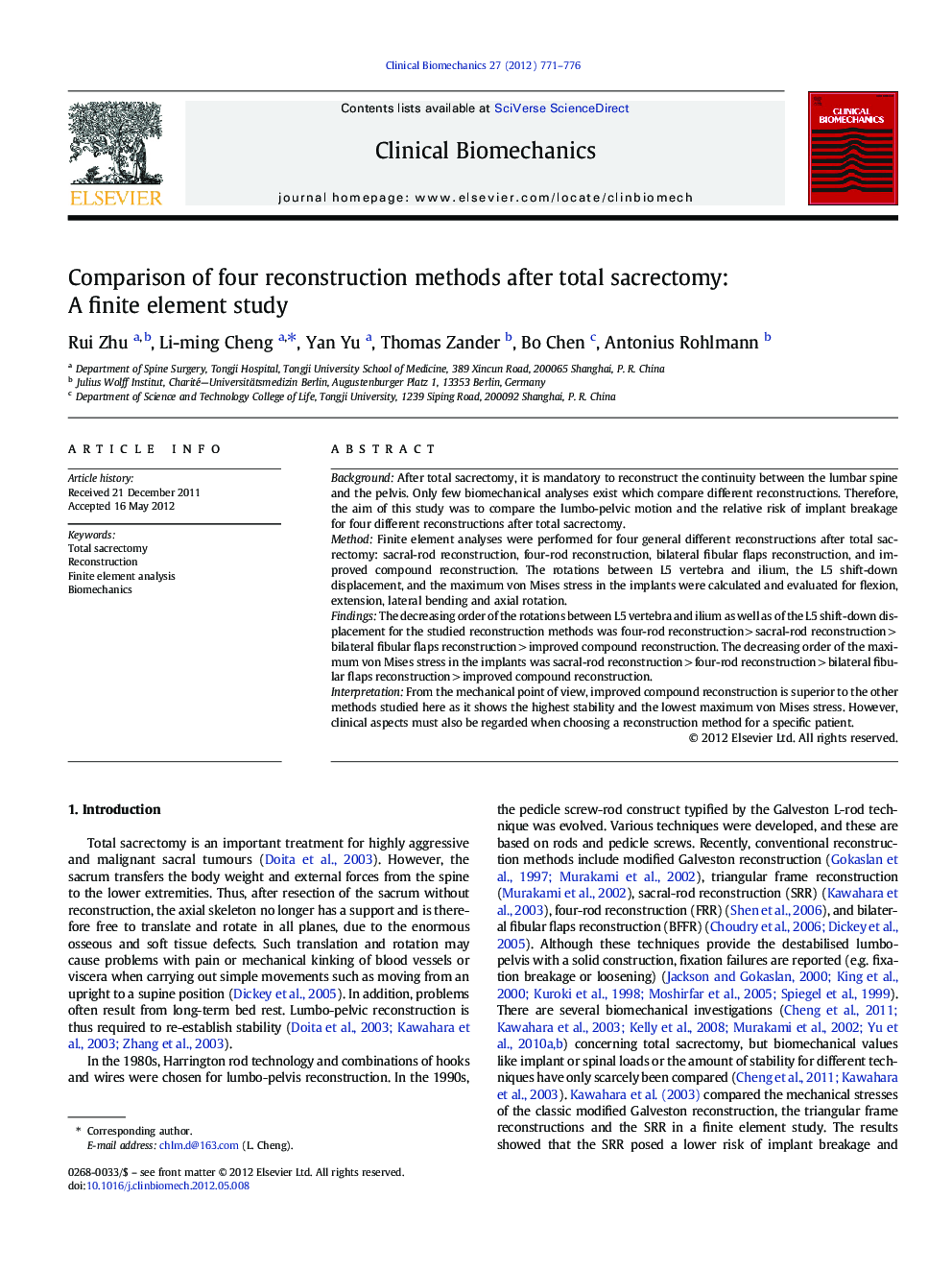| Article ID | Journal | Published Year | Pages | File Type |
|---|---|---|---|---|
| 6205151 | Clinical Biomechanics | 2012 | 6 Pages |
BackgroundAfter total sacrectomy, it is mandatory to reconstruct the continuity between the lumbar spine and the pelvis. Only few biomechanical analyses exist which compare different reconstructions. Therefore, the aim of this study was to compare the lumbo-pelvic motion and the relative risk of implant breakage for four different reconstructions after total sacrectomy.MethodFinite element analyses were performed for four general different reconstructions after total sacrectomy: sacral-rod reconstruction, four-rod reconstruction, bilateral fibular flaps reconstruction, and improved compound reconstruction. The rotations between L5 vertebra and ilium, the L5 shift-down displacement, and the maximum von Mises stress in the implants were calculated and evaluated for flexion, extension, lateral bending and axial rotation.FindingsThe decreasing order of the rotations between L5 vertebra and ilium as well as of the L5 shift-down displacement for the studied reconstruction methods was four-rod reconstruction > sacral-rod reconstruction > bilateral fibular flaps reconstruction > improved compound reconstruction. The decreasing order of the maximum von Mises stress in the implants was sacral-rod reconstruction > four-rod reconstruction > bilateral fibular flaps reconstruction > improved compound reconstruction.InterpretationFrom the mechanical point of view, improved compound reconstruction is superior to the other methods studied here as it shows the highest stability and the lowest maximum von Mises stress. However, clinical aspects must also be regarded when choosing a reconstruction method for a specific patient.
